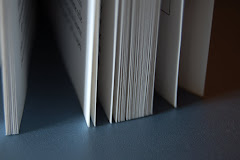"Psychogeography: The study of specific effects of the geographical environment, consciously organised or not, on the emotions and behaviour of individuals," definition from the International Situationiste movement.
This is a useful guide to an idea that is a much literary
these days as it was originally political.
With roots in the works of Defoe, with his plague year
trawl through London, and Blake's thoughts about London and Jerusalem, the idea of charting and reacting to an
environment went political with the situationist movement in the 50s and 60s. Figures
like Guy Debord set about defining psychogeography and underlining the idea of
people using it as a tool to find their own space, to create something new.
But in a modern world which seems to work against the
pedestrian it has become less about trying to change the environment than
sharing a reaction to it.
That's not to say the current psychogeographers do not
bemoan modern planning and Sinclair was particularly vocal about the
development of the Olympic Park and there has been plenty of criticism of the way Thatcher changed communities during her time in office.
But as Michel de Certeau noted in the 80s things had started to change and even experiencing the environment was becoming a varied experience.
Voyeurs look down from the sky scrapers and walkers are
down below. Psychogeography is about giving the emphasis back to the walkers.
The vouyeur loses the individual and sees the city as a homogeneous whole.
"Their story begins on ground level, with footsteps," writes de Certeau.
Technology is working against the walker surveillance and
closed areas etc as a result the novelist and poet not the psychogeographer who
is able to capture the emotions of a city.
London has again become the centre with JG Ballard, Iain Sinclair
and others.
Walking is again being seen as a tool for the writer. If
someone wants to immerse themselves in the city then they need to do it on
foot.
My only concern, which isn't dealt with in the book, is
that not only has modern technology made it harder for the modern
psychogeographers physically getting in touch with the ground but also in terms
of having an open mind.
One of the themes of the book, whether it be about
London, Paris or New York, is that psychogeographers can somehow find secret
parts of the city and unlock hidden truths.
In the age of social media I find it hard to believe that
rose secrets would remain so for very long or that it would be possible to walk
to a destination keeping an open mind to allow the feelings it sparks to be
felt genuinely.
In summary this is a very useful guide to the main ideas
and people involved with psychogeography. Very interesting for anyone who has
read Ballard, Sinclair, ackroyd or has an interest in major cities and a
passion for walking in them.












